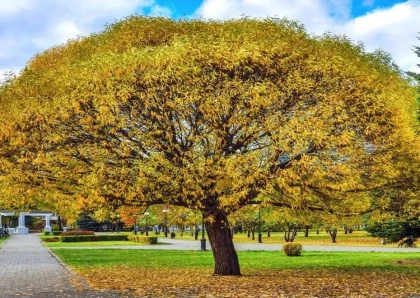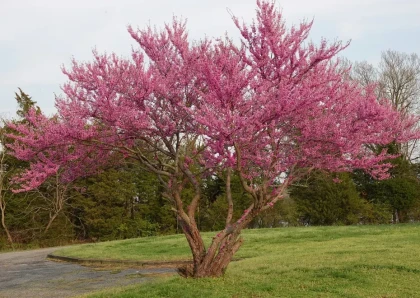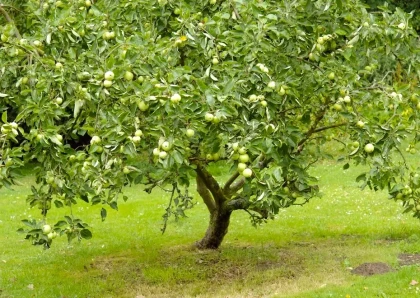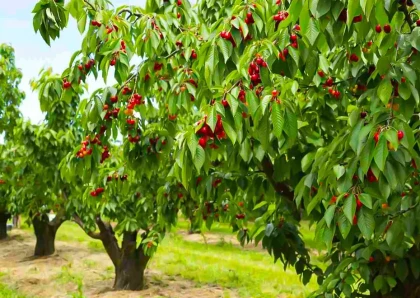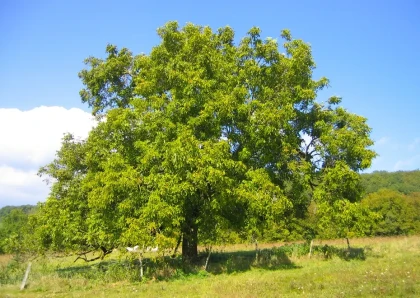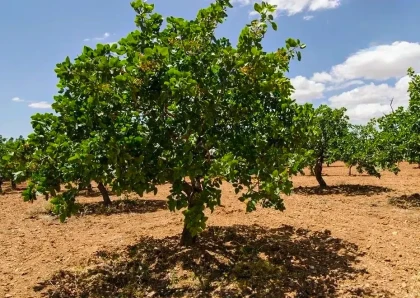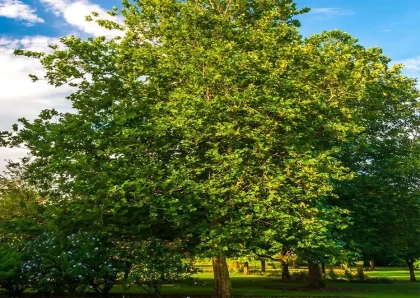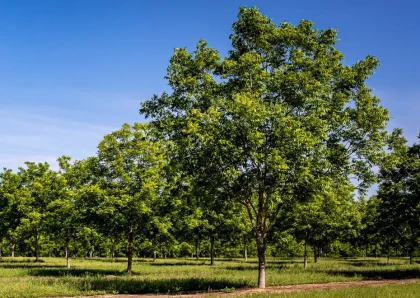
Pawnee Pecan Tree
Overview
History of the Tree
The Pawnee Pecan is a notable pecan tree variety that was developed by researchers at the USDA Agricultural Research Service. It was introduced in the late 20th century as a result of careful breeding and selection. The Pawnee Pecan has gained popularity among growers for its high-quality nuts and disease resistance.
Detailed Description of the Tree
The Pawnee Pecan is a deciduous tree with a medium to fast growth rate. It typically reaches a height of 40 to 60 feet (12 to 18 meters) with a spread of 30 to 40 feet (9 to 12 meters). The tree features an upright and spreading canopy with lush green foliage that turns golden-yellow in the fall.
It produces an abundance of medium to large-sized nuts with thin shells that are easy to crack. The nuts have a rich flavor and a high oil content, making them highly sought after by pecan enthusiasts.
Types of This Tree
The Pawnee Pecan belongs to the Carya illinoinensis species and is classified as a specific cultivar within the pecan tree family. It does not have distinct types, but it is important to select the appropriate rootstock for optimal growth and performance.
Importance of This Tree
The Pawnee Pecan holds several important qualities:
- High-Quality Nuts: The Pawnee Pecan produces nuts with a rich flavor, a high oil content, and a thin shell that is easy to crack. The nuts are highly regarded for their taste and are sought after for both culinary and snacking purposes.
- Disease Resistance: One of the key advantages of the Pawnee Pecan is its excellent disease resistance. It is less susceptible to pecan scab, a common and destructive disease that affects pecan trees, resulting in healthier and more productive trees.
- Early Nut Production: The Pawnee Pecan is known for its early nut-bearing capabilities. It typically starts producing nuts at a younger age compared to other pecan varieties, allowing growers to enjoy a harvest sooner.
How to Care for This Tree
Proper care is essential to promote the healthy growth and productivity of the Pawnee Pecan:
- Plant the tree in a location that receives full sunlight, as pecans require at least 6 to 8 hours of direct sunlight daily for optimal nut production.
- Ensure the soil is well-drained and fertile, as pecan trees thrive in deep, loamy soil. Conduct a soil test to determine any necessary amendments.
- Water the tree deeply and regularly, especially during periods of drought. Provide enough water to keep the soil consistently moist but not waterlogged.
- Apply a layer of organic mulch around the base of the tree, extending to the drip line. Mulch helps conserve moisture, suppress weeds, and regulate soil temperature.
- Prune the tree during the dormant season to remove dead or diseased branches and maintain an open canopy structure. Pruning also promotes air circulation and light penetration, leading to healthier trees and better nut production.
- Fertilize the tree annually with a balanced fertilizer formulated specifically for pecans. Follow the manufacturer's instructions and apply the fertilizer in early spring before new growth begins.
Benefits of the Tree
The Pawnee Pecan offers several benefits:
- High-Quality Nuts: The nuts produced by the Pawnee Pecan are known for their rich flavor, high oil content, and thin shells. They are perfect for both culinary use and snacking.
- Disease Resistance: The Pawnee Pecan's resistance to pecan scab, a common and troublesome disease, reduces the need for extensive disease management and allows for healthier and more productive trees.
- Early Harvest: This pecan variety starts producing nuts at a younger age compared to many other varieties, providing an earlier harvest and quicker return on investment for growers.
How to Plant This Tree
Follow these steps to successfully plant a Pawnee Pecan tree:
- Choose a planting location that provides full sunlight and has well-drained soil.
- Dig a hole that is wide and deep enough to accommodate the tree's root system.
- Place the tree in the hole, ensuring that the bud union or graft union is above the soil line.
- Backfill the hole with soil, gently firming it around the roots to remove air pockets.
- Water the tree thoroughly after planting and continue to water regularly, especially during the first year, to promote root establishment.
Different Types of Wood Products That Can Be Made From
The wood of the Pawnee Pecan tree is highly valued for its durability and attractive grain patterns. It is commonly used in fine woodworking, furniture making, cabinetry, flooring, and decorative items. The wood's rich color and unique patterns make it a desirable choice for various woodworking projects.
Cons
While the Pawnee Pecan offers numerous advantages, there are a few considerations to keep in mind:
- Pollination Requirements: Pecan trees, including the Pawnee variety, are wind-pollinated and require cross-pollination with another compatible pecan tree for optimal nut production. It is important to plant at least one other compatible pecan variety nearby.
- Size and Space Requirements: Pawnee Pecan trees can grow quite large at maturity, requiring ample space in the landscape. Ensure proper spacing to allow for the tree's size and to facilitate adequate airflow and sunlight penetration.
- Pecan Scab Susceptibility: While the Pawnee Pecan exhibits good disease resistance, it is still susceptible to pecan scab, particularly in regions with high humidity. Regular monitoring and appropriate disease management practices are necessary to mitigate the risk of scab infection.
FAQs
Q: How long does it take for a Pawnee Pecan tree to start producing nuts?
A: Pawnee Pecan trees typically begin to produce nuts around 4 to 6 years after planting, although the exact timing can vary depending on growing conditions and tree health.
Q: What is the best time to harvest Pawnee Pecans?
A: Pawnee Pecans are generally harvested in the late fall when the nuts have matured and reached their peak flavor. Harvest timing can vary slightly depending on local climate and growing conditions.
No listings available
Related Products
Questions & Answers
What do you want to know about this product?
Reviews (5)
PecanLover_1199
Nutty Delights Galore
The Pawnee Pecan Tree in my backyard is a true treasure. Its nuts are rich, flavorful, and a delight to crack open. Perfect for baking or snacking.
HarvestMaster55
Abundance in Every Harvest
I'm amazed by the productivity of the Pawnee Pecan Tree. Year after year, it blesses me with a bountiful harvest of high-quality nuts. A pecan lover's dream!
PecanEnthusiast22
A Nutty Paradise
The Pawnee Pecan Tree never disappoints. Its nuts are large, flavorful, and have a smooth texture. An absolute delight for any pecan connoisseur.
NutCracker123
Nuts Worth Cracking
The Pawnee Pecan Tree provides me with an endless supply of nuts worth cracking. They are fresh, delicious, and make the perfect addition to my recipes.
PecanMasterGuru88
Pecan Perfection
I've planted several Pawnee Pecan Trees, and they never fail to impress. The nuts are consistently top-notch, making them a favorite among my friends and family.







